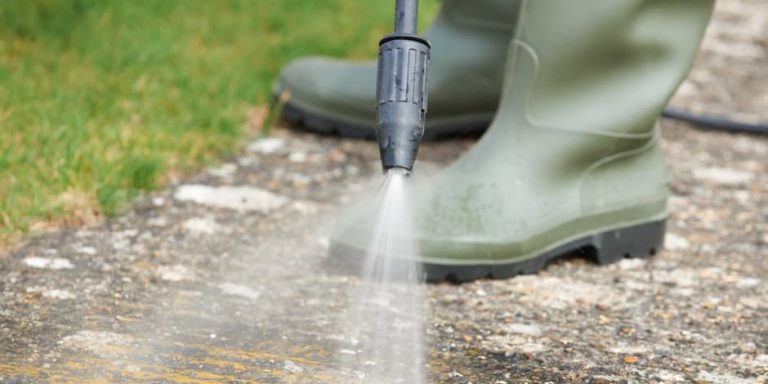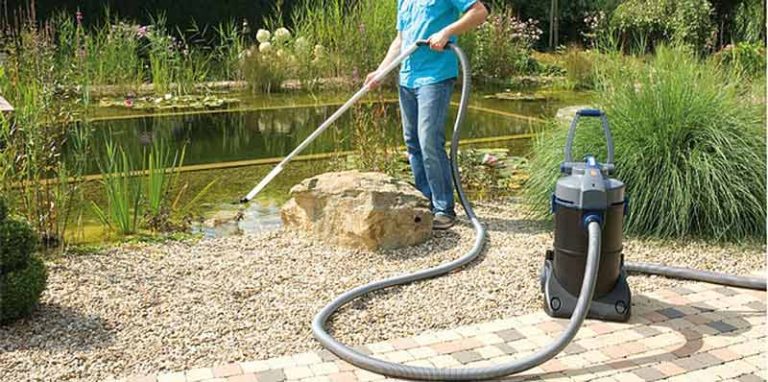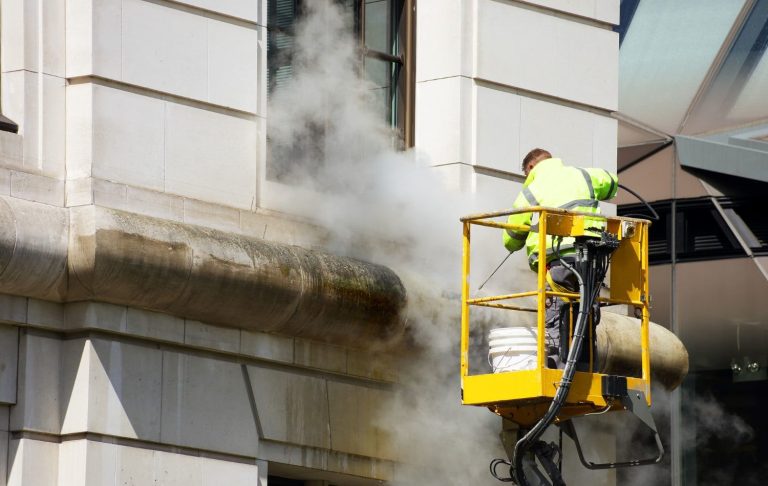
Power washing is often seen as a clean solution—but not everything it washes away stays harmless. One of the hidden environmental concerns lies in the chemicals used, particularly alkaline cleaners. These agents are highly effective at breaking down grease, oil, and grime, but they can also disrupt the delicate balance of soil chemistry and harm surrounding plant life. 🌍❌
This article explores how alkaline cleaners interact with soil and vegetation, what risks they pose, and how power washing professionals and homeowners alike can minimize the ecological impact.
🧼 What Are Alkaline Cleaners?
Alkaline cleaners are high-pH solutions, typically with a pH above 9, used to dissolve organic matter such as:
- Grease and oil
- Mold and mildew
- Animal waste
- Soot or smoke damage
They contain ingredients like sodium hydroxide (lye), potassium hydroxide, and sodium metasilicate. While powerful and efficient, these cleaners are corrosive and can have lasting effects when introduced to natural environments.
🌡️ Understanding Soil pH
Soil pH is a measure of acidity or alkalinity, and it significantly affects:
- Nutrient availability to plants
- Microbial life in the soil
- The ability of roots to absorb water and minerals
Most plants prefer soil with a pH between 6.0 and 7.5, which is slightly acidic to neutral. When this balance is disrupted, it can cause:
- Nutrient lockout, leading to yellowing or stunted growth
- Microbial die-off, harming decomposition and nutrient cycling
- Soil compaction and poor drainage
Introducing high-pH chemicals to the soil can push pH levels upward, making the soil too alkaline for healthy plant life. 🧪🥀
🧪 How Alkaline Runoff Affects Soil and Plants
1. Soil Alkalization
When alkaline runoff from pressure washing settles into the soil, it can elevate the soil’s pH significantly—especially in areas with poor drainage or limited rainfall. This shift disrupts the natural nutrient cycle.
2. Toxic Salt Build-Up
Many alkaline cleaners contain salts, which, when absorbed into the soil, can accumulate over time. These salts hinder plant water uptake, leading to wilting or browning even when water is present. 🌡️
3. Microbial Imbalance
Healthy soil is alive with bacteria and fungi. These organisms thrive in pH-balanced environments. When pH spikes, beneficial microbes die off, disrupting plant nutrition and soil regeneration.
4. Root Burn
Direct contact with alkaline runoff can burn plant roots, especially in young or shallow-rooted vegetation. This causes symptoms like curling leaves, root rot, or sudden dieback.
📍 Where This Happens Most
- Driveways next to lawns or flowerbeds
- Building exteriors surrounded by landscaping
- Concrete patios with potted plants nearby
- Commercial lots with decorative trees or shrubbery
If wash water is not properly contained or redirected, it flows off surfaces and soaks into nearby soil, bringing high-pH chemicals along with it.
🧠 Real-World Example
In one documented case, a commercial plaza power washed its parking structure using strong alkaline degreasers. The runoff flowed into surrounding landscape beds, killing over 50% of the decorative shrubs within two weeks.
Soil testing revealed pH levels had climbed from 6.7 to over 8.9. It took months of remediation—including gypsum application, soil flushing, and replanting—to restore the area. 💸🌱
✅ How to Prevent Environmental Damage
1. Use pH-Neutral or Mild Detergents
Wherever possible, use pH-balanced cleaners, especially in residential or landscaped areas. Many “green” detergents have a pH of 7–8 and are biodegradable.
2. Contain and Redirect Runoff
Use berms, booms, or wet/dry vacuums to prevent runoff from entering soil beds. Redirect water toward safe drainage zones or containment tanks.
3. Pre-Wet Vegetation
Spraying water on plants before cleaning can dilute any overspray, making it less harmful if contact occurs.
4. Apply Protective Covers
For sensitive areas, cover nearby soil and plants with tarps or plastic sheeting during the power washing process.
5. Post-Cleaning Soil Testing
After large cleaning jobs, especially with heavy degreasers, conduct pH soil tests. If pH has shifted too high, apply soil amendments (like elemental sulfur or peat moss) to restore balance.
♻️ Eco-Friendly Alternatives to Harsh Alkaline Cleaners
| Traditional Alkaline Cleaner | Eco-Friendly Option |
|---|---|
| Sodium hydroxide degreasers | Plant-based surfactants |
| Heavy-duty concrete cleaner | Enzyme-based cleaners |
| Paint strippers | Citrus-based or soy-based removers |
Many of these alternatives are readily biodegradable and much safer for the surrounding soil and vegetation. 🌿✅
🌍 Regulatory Considerations
In some cities and states, letting untreated alkaline wash water flow into public lands, storm drains, or landscaped medians can result in:
- Fines of $500–$5,000+
- Orders for remediation or restoration
- Potential litigation for landscape damage
Some municipalities even require permits for chemical-based pressure washing, especially in environmentally sensitive zones.
🧠 Final Thoughts
Alkaline cleaners may get the job done faster, but without careful handling, they can silently poison the very landscapes they’re meant to beautify. Power washing professionals must think beyond just surfaces—they must think about soil, roots, and ecosystems too.
By using gentler cleaners, managing runoff, and staying informed, we can protect our properties and our planet—one clean surface at a time. 🌱💧✅
Browse Amazon Here For Popular Pressure Washers And Accessories






